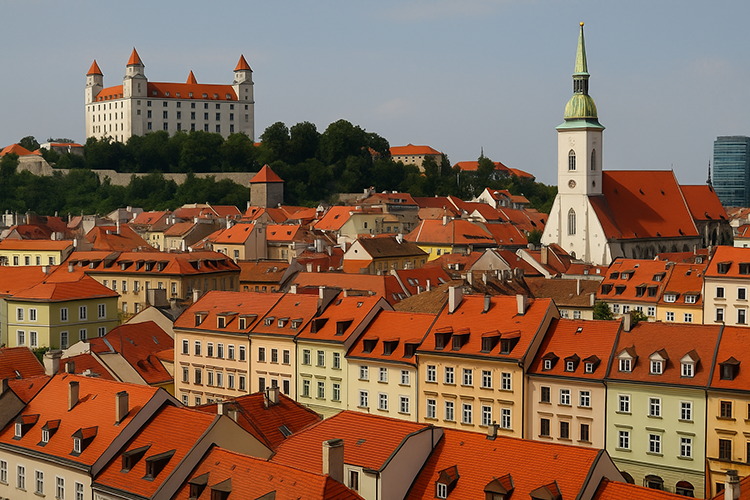Slovak Housing Market Among Europe’s Least Affordable, Deloitte Report Finds
The Slovak housing market has become one of the most challenging in Europe for households seeking to buy their own homes. According to Deloitte’s Property Index 2025, Bratislava, Košice and Banská Bystrica all rank among the seven least affordable regional cities in Europe when comparing property prices to average wages.
The study highlights that affordability is not driven by absolute housing prices—which remain lower than in countries such as Austria or Germany—but by the gap between household incomes and rising property values. On average, Slovaks must commit more than 14 gross annual salaries to purchase a 70 m² apartment, placing the country in line with the least affordable European markets【deloitte.com†source】.
Recent data from the National Bank of Slovakia shows that the average residential price reached €3,113 per square metre in mid-2025, with Bratislava exceeding €3,900 per square metre in some segments. While these levels remain below Austria (approx. €4,900 per sq m) or the Czech Republic (approx. €4,500 per sq m), lower Slovak wages make ownership comparatively harder to achieve. The average gross monthly salary in Slovakia stood at around €1,654 in 2025, compared to €2,027 in Czechia and €2,093 in Poland.
“The problem of Slovakia is not just the price per square metre, but purchasing power. Household incomes have not kept pace with property growth, and that creates the perception of extreme inaccessibility,” commented Richard Churý, CEO of a major Slovak brokerage network, in a local real estate review.
The affordability gap particularly affects young households, single-income families and divorced individuals, many of whom are forced to remain in rental housing. Analysts note that while mortgage lending has picked up again due to falling interest rates, demand is increasingly concentrated in Bratislava and regional centres, where limited supply continues to put upward pressure on prices.
A report from the Real Estate Union of the Slovak Republic underscores the “two-speed” nature of the market. Prices in Bratislava and Košice remain buoyant, while smaller towns face stagnation due to negative demographic trends and outmigration.
Looking ahead, forecasts suggest that lower interest rates will stimulate further demand in 2026. However, supply constraints in new residential development, particularly in Bratislava, are expected to keep prices elevated. Deloitte notes that in Prague, where supply has also tightened, prime residential affordability is deteriorating in a similar way—suggesting a wider Central European trend.
Despite some regional differences, the consensus among professional observers is that Slovakia’s affordability crisis is less about housing being “more expensive than London or Milan” in absolute terms, and more about the disproportion between wages and house prices. As Vladimír Kubrický, analyst at the Real Estate Union, observed: “What we are seeing is a structural imbalance. Even when prices are lower than in Western Europe, Slovak households face greater difficulty in financing their own homes because their earnings are far behind.”








